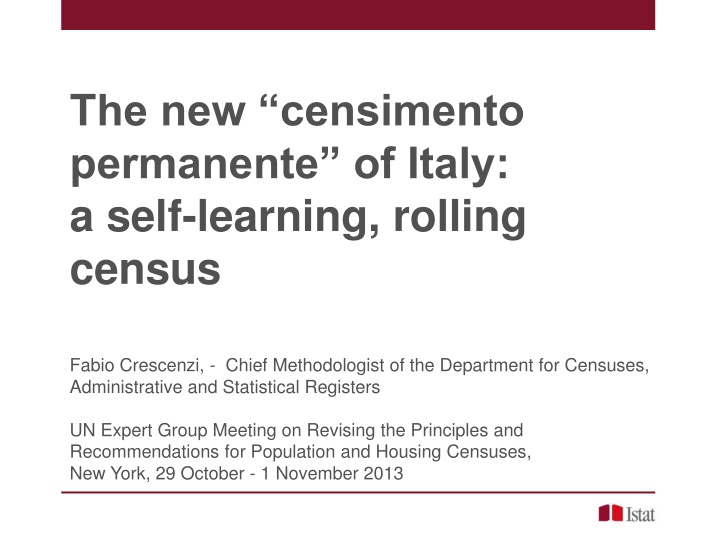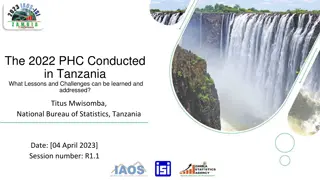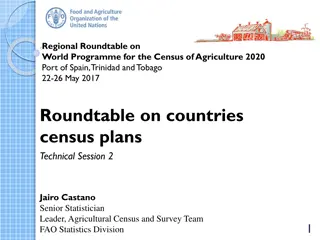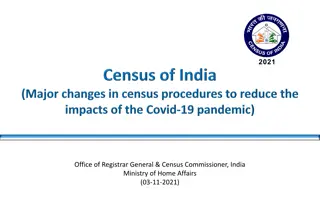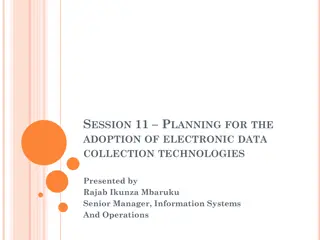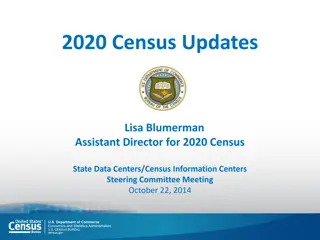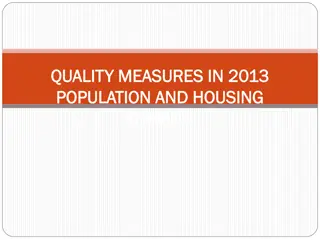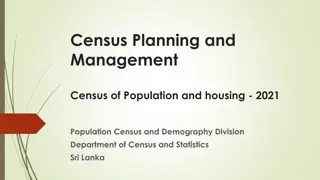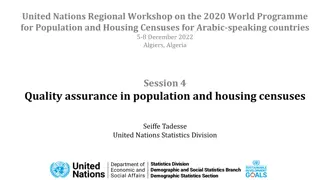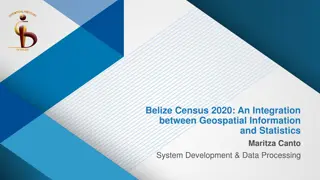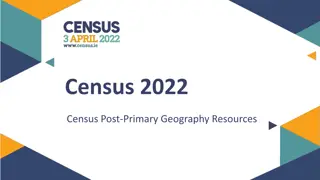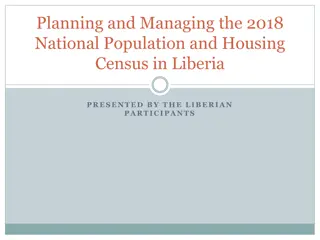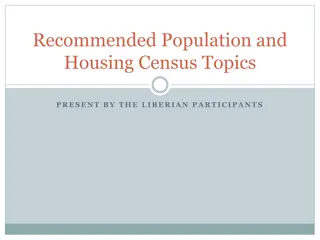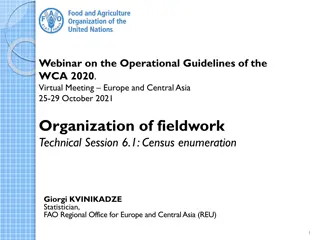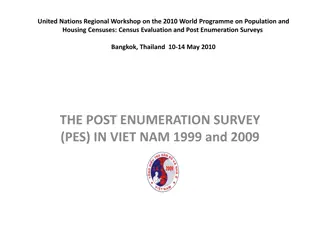The New Censimento Permanente of Italy: A Self-Learning Census Approach
This content showcases the innovative censimento permanente system in Italy, a self-learning and rolling census. It discusses the transformation in population data collection, statistical tests, and the integration of administrative sources for an accurate count. The methodology, tools, and techniques like the C-sample design and statistical tests are highlighted, emphasizing the shift towards a modern and efficient census process.
Download Presentation

Please find below an Image/Link to download the presentation.
The content on the website is provided AS IS for your information and personal use only. It may not be sold, licensed, or shared on other websites without obtaining consent from the author.If you encounter any issues during the download, it is possible that the publisher has removed the file from their server.
You are allowed to download the files provided on this website for personal or commercial use, subject to the condition that they are used lawfully. All files are the property of their respective owners.
The content on the website is provided AS IS for your information and personal use only. It may not be sold, licensed, or shared on other websites without obtaining consent from the author.
E N D
Presentation Transcript
The new censimento permanente of Italy: a self-learning, rolling census Fabio Crescenzi, - Chief Methodologist of the Department for Censuses, Administrative and Statistical Registers UN Expert Group Meeting on Revising the Principles and Recommendations for Population and Housing Censuses, New York, 29 October - 1 November 2013
A magic triangle in the Digital Agenda of Italy
Moving to the age of the censimento permanente
Would you shop outside if you have a department store at home? SIM: At Istat there is a formidable archive containing integrated microdata from many Administrative Source
One Census - Two faces D face To Provide Data on the counted population C face To Count the population
C-Face - Statistical Test on the Count of ANPR Each year we will test the count of each municipal register of population Is the Count of ANPR(j) the true Population of Municipality j? No! the Null Hypothesis is rejected Yes! the Null Hypothesis is accepted
Ingredients for the Test A priori Knowledge derived from administrative sources (SIM the Istat System of Microdata from Administrative Sources) Results of the C-sample, a rolling area-sample survey carried out by enumerators external to the Municipal Offices Logic of self-learning in the determination of sample sizes overweighting the most critical situations in previous years
C-sample Starting date 2016 Very Short! Few data for counting persons and households Acquisition: CAPI by Handheld Monitoring: WEB Area Sample-Capture Recapture About 650.000 households per year All Municipalities over 50.000 inhabitants Rolling inclusion under 50.000 inhabitants Questionnaire Tecnique Sampling design Self learning After each year the sample is revised. The sample of municipalities is over weighted if the null hypothesis was rejected.
The hamletic question Correct the count or do not correct the count? Whatever the answer, We have a strategy
In case of acceptance of null hypotheses With Correction (after 2021) Without Correction (till 2021) ANPR Count is not corrected Count calculated from census population (2011) by adding and subtracting ANPR flows In case of rejection of null hypotheses With Correction (after 2021) Without Correction (till 2021) Outstanding control of the register employing signals from Administrative Sources other than ANPR Outstanding control of the register employing signals from Administrative Sources other than ANPR ANPR Count is corrected by a factor computed by Istat Count is calculated starting from census population count (2011) by adding and subtracting ANPR flows. Municipality is informed of which would be the Count corrected by Istat
The D face the D-sample Sampling design Two stage About 1.500.000 households per year Questionnaire Long Technique Paperless: CAWI and CAPI Monitoring WEB (SGR)
D-sample. Plan of data accumulations by output area size Number of years Central year Output area size (inhab.) Pooling Interval >100.000 1 t t 35.000-100.000 3 t, (t-1), (t-2) (t-1) <35.000 5 t, (t-1), (t-2), (t-3), (t-4) (t-2) DEPEND ON OUTPUT AREA SIZE REFERENCE YEAR OF ESTIMATES
D-sample. Dissemination Starting Plan Year of reference (1th of January) by size of the output area Year of dissemination (31th December) >100.000 35.000-100.000 <35.000 2016 2017 2018 2019 2020 2021 2022 2023 2024 2016 2017 2018 2019 2020 2021 2022 2023 2024 2017 2018 2019 2020 2021 2022 2023 2018 2019 2020 2021 2022
Rotation and Revolution, in an harmonious equilibrium of celestial bodies SIM C-sample D-sample ANNCSU PERMANENTE CENSUS ANPR
